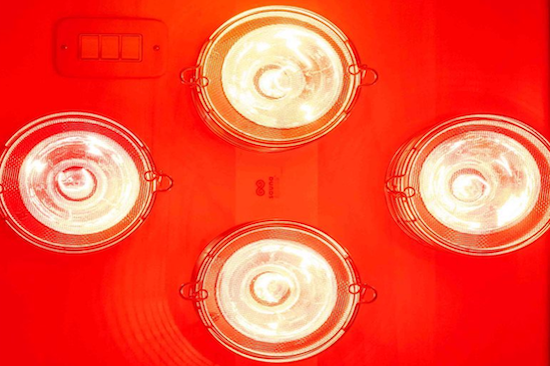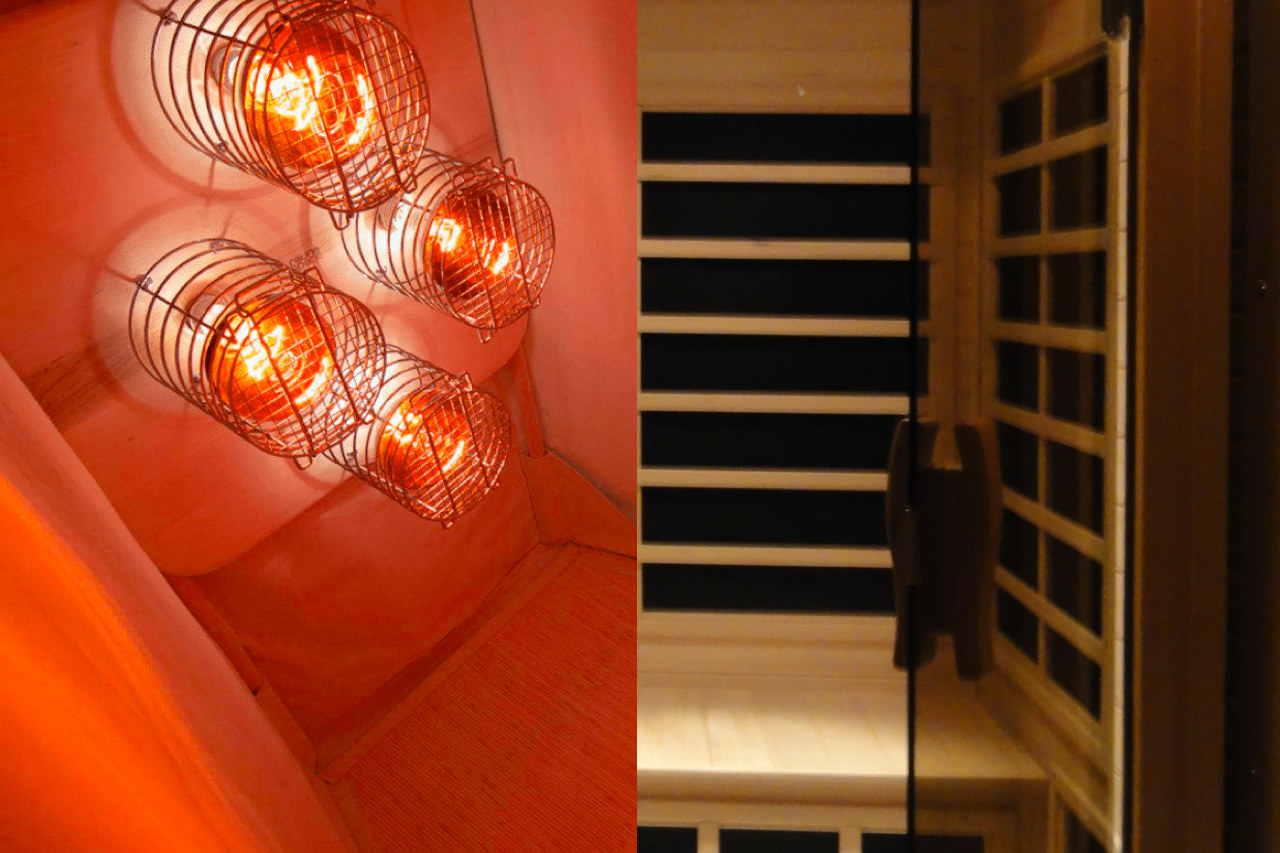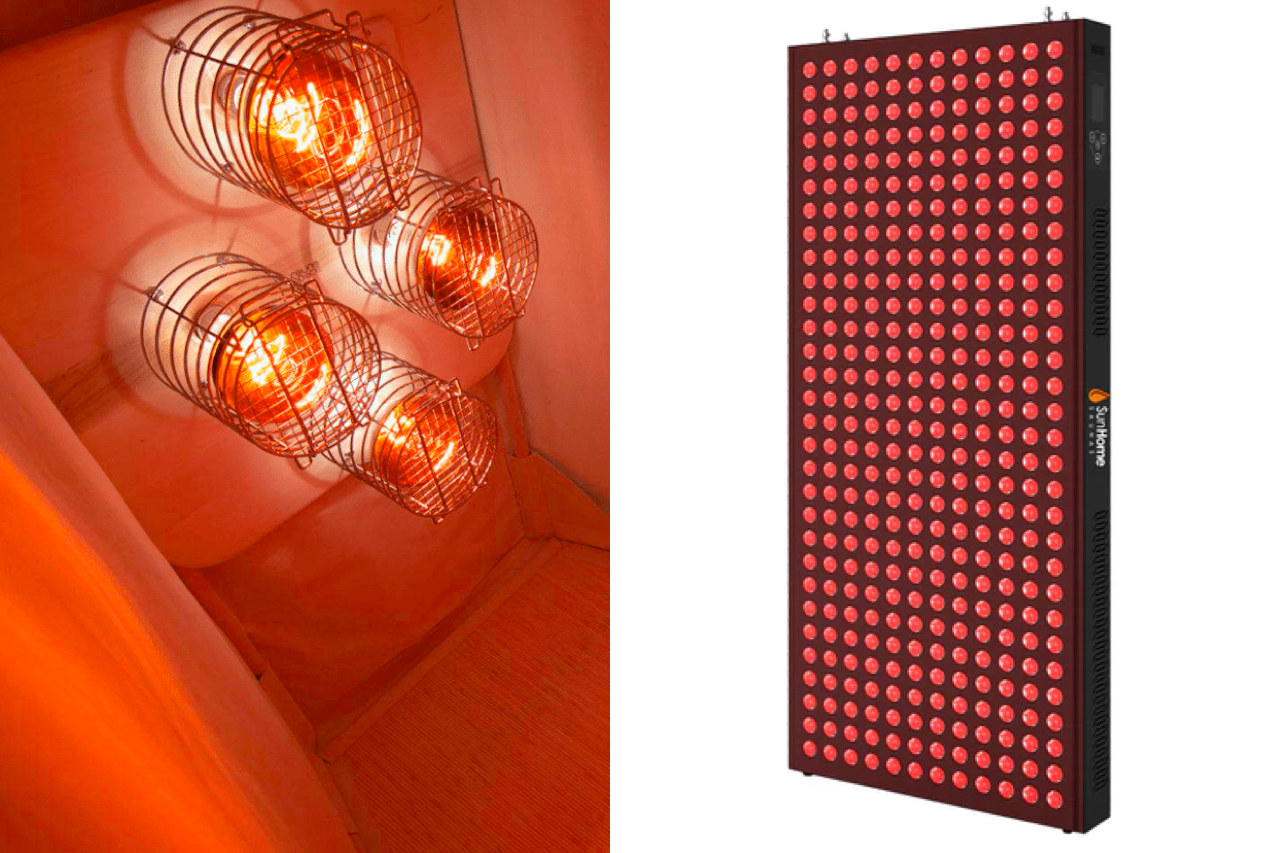- HOME
- Infrared Sauna Benefits
- Near-infrared Benefits
Near Infrared Sauna Benefits, Safety & User Guide

You’re reading our guide to the near-infrared sauna, inspired by questions from users on social media. Whether you're a seasoned enthusiast or just dipping your toe into the world of infrared therapy, this guide will help you explore the full potential of near-infrared saunas. Discover more about the science behind near-infrared light and its benefits for your wellbeing.
A quick tour of the blogpost
- What is near infrared heat
- Does near infrared therapy produce heat
- Do you sweat in a near infrared sauna
- What are the benefits of near infrared sauna
- What is better infrared or near infrared
- Is far infrared the same as near infrared
- What is the difference between red and near infrared light
- How long should I sit in in a near infrared sauna
- Do you need goggles in a near infrared sauna
- Are near infrared saunas safe
What is near infrared heat?
Near infrared heat takes us just beyond what our eyes can see, into a special zone of light. Near infrared radiation (NIR) sits just past the visible spectrum, beginning at 700 nanometers and stretching up to 1,300 nanometers.
It's a unique kind of warmth, lighter and less intense than the heat we usually feel, making it the gentle side of the infrared family.
Near-infrared saunas use portable technology such as LED lamps and panels, both focus on a comfortable heat directly on the skin surface.
Compact and versatile, near-infrared saunas bring the luxury of a spa session to your personal space, providing targeted health benefits in a convenient, home-friendly package.

Does near infrared therapy produce heat?
While near infrared sauna does produce heat, it's a gentler, subtler kind than traditional saunas. In a conventional sauna, steam or dry, the goal is to raise the temperature of the entire room and to create a hot, steamy environment that makes you break into a serious sweat.
This offers a more immersive, all-encompassing heat experience, often reaching temperatures well over 150°F (65°C). Some find this immersion invigorating, others may find it overwhelming, especially for prolonged sessions.
Near infrared sauna therapy, with its unique wavelength, focuses more on lighting up your skin with benefits rather than cranking up the heat. It's perfect for those seeking the wellness perks of heat without the overwhelm, fitting seamlessly into daily life.
Do you sweat in a near infrared sauna?
In a near-infrared sauna, the emphasis is on gently heating the surface of your skin with focused NIR light, rather than making your skin sweat. Sure, it can cause some sweating, but usually not that profusely.
Additionally, sweating in a near-infrared sauna varies from person to person. Factors like individual physiology, hydration levels, and even environmental conditions can influence how much you perspire. Some folks might find themselves lightly glistening after a session, while others might experience more noticeable sweat beads.
Research suggests that genetics, fitness level, and even stress levels play a role in how easily some people sweat [1]. For example, individuals with a higher concentration of eccrine sweat glands, which are responsible for regulating body temperature, may sweat more readily. Additionally, those who are more physically fit tend to sweat sooner and more copiously during exercise, including sauna sessions.
Ultimately, how much you sweat in a near infrared sauna is individual, and there's no general answer. It's part of the body's natural response to heat, helping to cool down and detoxify.

What are the benefits of near infrared sauna?
Near infrared saunas offer many possible benefits to boost your well-being. Their remarkable ability to improve skin tone, elasticity and overall health comes from stimulating collagen production and accelerating the healing process of minor injuries.
The comforting warmth of near-infrared light stimulates blood circulation, allowing nutrients to reach your skin cells and facilitating the removal of toxins.
The deep penetration of NIR light does not stop at the skin. NIR’s unique wave and particle properties cause a sort of ripple effect that reaches deep into subcutaneous layers including muscles and bones. It's like soaking in a gentle glow, encouraging your body's natural processes, from improving skin elasticity to aiding muscle recovery.
In addition, the gentle warming of the tissue increases blood flow, ensuring a richer supply of oxygen and nutrients to the muscles.
The compact design of near infrared saunas enables seamless integration into various settings. You can enjoy personalized sessions anywhere, including from the comfort.
This flexibility makes near infrared technology a convenient choice for reaping targeted health benefits without the spatial commitment of a traditional sauna cabin.

What is better infrared or near infrared?
What's "better" is subjective and hinges on personal preferences and health goals, but please note too that the near-infrared sauna is a type of infrared sauna.
Infrared technology comes in many different forms, among others far-infrared, full spectrum and near-infrared saunas. Each taps into specific segments of the infrared wavelength spectrum to deliver distinct health benefits.
As we’ve already seen, the near-infrared sauna causes mainly surface-level effects, alongside a more indirect ripple effect down into layers beyond the skin tissues.
Far infrared saunas reach deeper by directly interacting with molecules that make up (parts of) our bodies, and produce a form of heating that penetrates into the body's tissues for direct detoxification, improved circulation, and muscle relaxation.
This makes far infrared saunas a preferred choice for therapeutic heat and deep tissue benefits.
Full spectrum infrared saunas combine the whole infrared spectrum, from near to far infrared wavelengths, leading to a holistic wellness experience that addresses different needs.
When comparing near infrared, far infrared saunas, and full spectrum infrared saunas, consider your desired outcomes and preferences. Are you seeking targeted skin benefits and gentle warmth, deep tissue detoxification and muscle relaxation, or a combination of both?
Understanding the differences between these three types can help you choose the sauna experience that best suits your needs.
Is far infrared the same as near infrared?
Although both fall within the infrared spectrum, they operate at different wavelengths and frequencies. And that also makes the most important difference.
As we have seen, FIR has a profoundly penetrative action at cellular level. NIR primarily affects the surface level of the skin. Each produces a distinct heat sensation that befits different wellness goals.
To sum it up, while both types share the infrared label, their applications, effects and heat experiences vary significantly.

What is the difference between red and near infrared light?
Red light and near-infrared light, integral to red light therapy, operate on distinct wavelengths, offering complementary healing benefits. Red light, visible and within the 620-700 nm spectrum, primarily targets the skin's surface and shallow layers. It boosts cellular energy, enhances collagen production, and improves blood flow, revitalizing the skin and aiding in surface-level repair.
In contrast, NIR light, invisible and ranging from 700 to 1300 nm, penetrates deeper into the skin tissues and through a ripple effect also reaches muscles, joints, and bones. It stimulates deep tissue healing, reduces inflammation, and relieves pain by enhancing blood circulation in deeper structures.
The synergy of red and NIR light in therapy maximizes healing, combining surface rejuvenation with deep tissue repair for comprehensive health benefits.
How long should I sit in a near infrared sauna?
To provide accurate guidance on the optimal duration for near infrared sauna sessions, it's essential to consider factors such as individual tolerance, health status, and the specific design of the sauna.
Based on general recommendations beginners typically start with shorter sessions, around 5 to 10 minutes, to acclimate to the heat gradually. Over time, as tolerance builds and comfort increases, sessions can be extended to 20 to 30 minutes or longer.
However, it's important to note that individual tolerance levels vary, and some people may find shorter or longer sessions more suitable for their needs. Additionally, if you have underlying health conditions, it's advisable to consult with a healthcare professional before starting a sauna regimen.

Do you need goggles for near infrared sauna?
In near infrared saunas, eye protection is advised due to the potential impact of infrared radiation on eye health. While NIR levels are generally low and safe, prolonged or intense exposure can pose risks.
Some sauna manufacturers include goggles for added comfort and protection, especially in scenarios with intense light exposure. Following manufacturer recommendations and using goggles can enhance the sauna experience and minimize risks.
Are near infrared saunas safe?
In the debate surrounding the safety of near-infrared saunas, it is essential to consider the dual nature of NIR effects. While near-infrared light is beneficial for cell healing and growth, excessive exposure to sunlight, which contains a significant amount of NIR, can lead to skin damage like wrinkles and reduced elasticity.
While we recognize the potential risks of overexposure to sunlight, it is important to realize that NIR sauna exposure is controlled and short-term. Moreover, near infrared saunas are designed with safety in mind. NIR radiation levels are generally low and within established safety limits, as set out in standards such as IEC/EN 62471 [2].
Ultimately, near infrared saunas offer a safer way to enjoy the benefits of near infrared radiation. By adhering to recommended usage guidelines and prioritizing safety, you can reap the benefits of bear infrared saunas while minimizing potential risks.
If you’re interested in more information on the safety of infrared saunas, we recommend you to read the following articles which provide a comprehensive picture, exploring the long-term effects of using an infrared sauna and its skin health benefits.

Sam Everhart
Inspired by this blog post about near-infrared saunas? Keep exploring with these three curated articles below, and for even more insights and reviews (PEMF mats and sauna blankets), check out our blog at saunace.com!
References
1. Erica Roth, Sweating (Normal Amounts): Causes, Adjustments, and Complications, Healthline,https://www.healthline.com/health/sweating
2. International Electrotechnical Commission, IEC 62471, Photobiological safety of lamps and lamp systems, https://webstore.iec.ch/en/publication/7076


